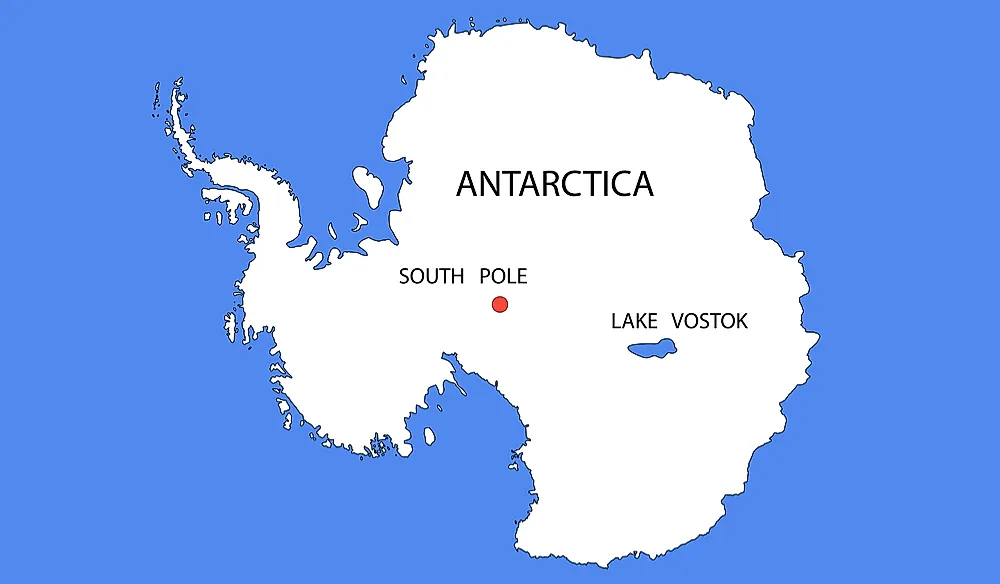Which Is The Largest Subglacial Lake In Antarctica?

Antarctica has about 400 subglacial lakes of varying lengths and depths. A subglacial lake is a lake that has been formed under a glacier. For this type of a lake to be formed, the entire perimeter of the lake must have a hydrostatic seal if the threshold is below the floating level. Subglacial lakes are mainly found in Antarctica but can also be found in other regions with similar climatic characteristics. There are also evidence of subglacial lakes outside of Earth, like on Mars and Jupiter’s moon Europa. The largest known subglacial lake is Lake Vostok which is located in Antarctica.
Overview of Lake Vostok
Lake Vostok is one of the known subglacial lakes in Antarctica, located beneath Russia’s Vostok Station. This freshwater lake is about 13,100 feet under the surface of the ice and approximately 1,600 feet below the sea level. It is 160 miles long, 30 miles wide at its widest point, and 1,417 feet deep making the world's fourth deepest lake. With a surface area is approximately 4,830 square miles, it is the 16th largest lake in the world. It is also the 6th largest by volume, with a volume of approximately 1,300 cubic miles. A ridge divides the lake into two deep basins. The depth of water over the ridge is approximately 700 feet compared to 1,300 feet and 2,600 feet in the northern and southern basins respectively. Lake Vostok got its name from the Vostok Station and the lake was discovered by Andrey Kapitsa.
Discovery of the Lake
The idea of a freshwater lake under the ice sheets in Antarctica was first conceived around the end of the 19th century by Peter Kropotkin. He suggested that the melting point of ice at the lowest portion of accumulated ice could be decreased by tremendous pressure exerted by the several layers of accumulated ice. His theory was supported by Russian glaciologist I. A. Zotikov. Using seismic sounding around the Vostok Station, Andrey Kapitsa measured the depth of the ice sheet and suggested that subglacial lakes existed in the region. In the 1970s, as the British scientists were conducting ice-penetrating surveys in and around Antarctica, their radar registered an unusual reading around the Vostok Station suggesting that a freshwater lake existed below the ice sheet. Subsequent research revealed that Lake Vostok was one of the world’s largest lakes.
Characteristics
The waters of Lake Vostok is estimated to have been sealed off under the thick ice sheet approximately 15 million years ago making it the lake with the oldest water in the world. Subsequent research has also shown that the water of the lake is always freezing and carried away the movement of the Antarctic ice sheet and replaced by the waters melting down from parts of the ice sheet under high pressure. The lake’s water has an average temperature of approximately -30 °C and the high pressure from the weight of ice above ensure that the water remains liquid even below the normal freezing point. Surprisingly, the lake also has tides and is always under complete darkness. The surface of the may rise for about 0.47 inches depending on the position of the moon and the sun. Despite high pressure, researchers believe that microbial life may be possible in the lake.











